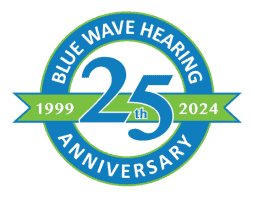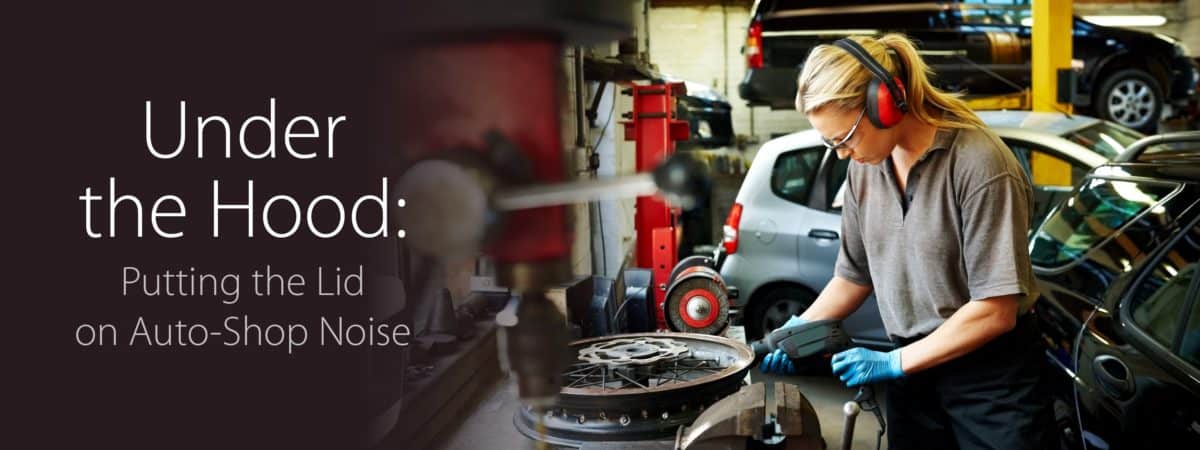- Alcohol and Hearing Health - April 9, 2025
- How Smoking Can Harm Your Ears - March 11, 2025
- Succeeding in the Workplace with Hearing Aids - February 10, 2025
Clang! Slam! Rizzz! Vroom!
From engines running and car doors closing to sanders whirring and air compressors humming, workplace noise comes with the territory at auto shops, and some of it can prove damaging to a mechanic’s ears and hearing health. An estimated 22 million American workers across various industries experience dangerous sound levels, according to the National Institute for Occupational Safety and Health (NIOSH), yet excess noise is one of the most preventable causes of hearing loss.
Did you know?
- Four million Americans work amid hazardous noise levels every day.
- Occupational noise is a key culprit in hearing loss that occurs in adulthood.
- Workers’ compensation for hearing loss disability amounts to about $242 million each year.
- Some 34% of those exposed to workplace noise report that they skip hearing protection.
- More than 31 million Americans ages 6 to 69 have permanent hearing damage due to noise.
- Loud noise can destroy the inner ear’s hair cells, a crucial, irreplaceable part of healthy hearing.
- Quality hearing protection reduces noise intensity while still allowing the sounds you want to hear.
- Exposure to excess noise can lead to tinnitus, a common and potentially debilitating problem of buzzing, humming, or ringing in one or both ears.
- Hearing loss due to noise exposure is cumulative and could go unnoticed until years later, but the damage may continue to occur and be irreversible.
In honor of National Protect Your Hearing Month in October, read on to learn more about the risks associated with working in an auto shop and ways to guard against noise hazards in any workplace.
How Loud Is Too Loud in an Auto Shop? Hint: Safer Levels Are Below 85 Decibels.
| Some Typical Noise Hazards | Decibel Level or “dBA” |
|---|---|
| Running engine | 190 |
| Air hammer on metal | 112 |
| Compressed air through nozzle | 95 |
| Disk sander | 90 |
| Car horn | 110 |
| Electric drill | 102 |
| Loaded impact wrench | 102 |
| Angle grinders | Over 85 |
| Industrial vacuum | 85 |
Recommended Standard
According to NIOSH, workplace noise exposure “should be controlled below a level equivalent to 85 dBA for eight hours to minimize occupational noise-induced hearing loss.”
Length of Time Before Damage Occurs
Noise-related hearing loss can be temporary or permanent, immediate or gradual. It can occur from one-time exposure to a forceful sound, such as an explosion, or result from prolonged exposure to sounds at or louder than 85 decibels. The greater the sound, the faster the damage may occur.\
Both NIOSH and the Occupational Safety and Health Administration (OSHA) offer guidance for curbing workplace noise hazards. In fact, OSHA requires selected employers to implement a hearing-conservation program “whenever worker noise exposure is equal to or greater than 85 dBA for an 8-hour exposure or in the construction industry when exposures exceed 90 dBA for an 8 hour exposure.”
Some ways to control or protect against occupational noise hazards include:
- Engineering controls involve solutions such as modifying or replacing equipment, substituting less-noisy alternatives, separating the noise source from workers or conducting noise-reducing maintenance or repairs.
- Administrative controls, include limiting the duration of exposure to noisy equipment, providing quiet spaces for respite away from noise, and running noisy machines during less-populated shifts.
- Effective and properly worn hearing protection such as quality earplugs, headphones, and earmuffs designed to suppress noise.
If you have a noise-related hearing loss, you can be helped. Schedule an appointment with your local audiologist, who can conduct a case history, provide a complete diagnostic hearing evaluation, and make the appropriate recommendations — which could include custom hearing protection, treatment with hearing technology, or both — based on your individual results.


